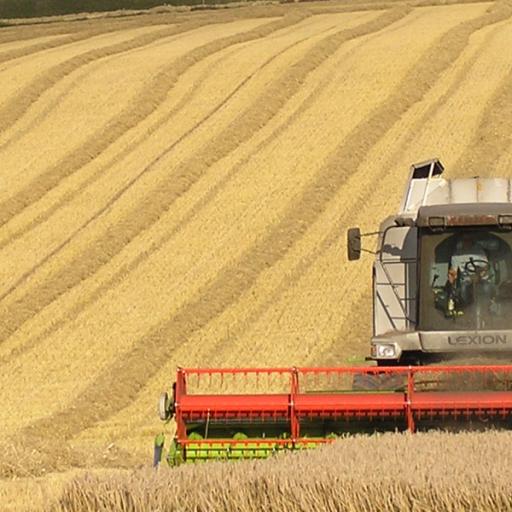Despite their beneficial environmental services, European agriculture is associated with a series of adverse environmental effects. Among the factors creating the unbalance between agriculture and environment, CAP measures are considered of primary importance. Supports linked with output levels (coupled pay- ments) increased production to levels that would not have occurred otherwise, resulting into intensification, specialization, expansion of cultivated areas and rise in livestock numbers (Baldock et al., 2002). Even though coupled payments have not yet been cancelled by EU market policy (Pillar I), the Commission circularly admitted in 1988 that such a price policy is liable for environmental damages (Fennel, 1997) and decided to reorganize CAP as a response to the wider demand for an environmentally oriented CAP.
The major element of the 1992 or McSharry CAP reform was the gradual reduction or even elimination of production subsidies and the introduction of direct aid payments, provided per hectare (decoupling) to compensate farmers for support price cuts (EC, 2003). The substitution of price support measures by decoupled payments was continued by the 1999 or Agenda 2000 reform, which makes direct aid payments conditional to environmental aims (i.e. horizontal regulation). A long-term set-aside mechanism was proposed and a package of rural development measures (Pillar II) was promoted to complement reforms of common market organizations (CMOs) and internalize major environmental considerations. To maximize environmental benefits, both direct and pillar II payments are subject to the cross-compliance principle, a sanctioning approach incorporated in horizontal regulation that involves proportionate penalties for environmental infringements entailing, where appropriate, partial or full removal of aid in the event of deviation from certain farming standards (EC, 1999). Finally, dynamic modulation involves the transfer of funds released from the compulsory reduction of market policy payments to rural development measures contributing to environmentally benign practices. The reforms were strengthened by the 2003 or Mid-term review CAP reform, which introduced a single payment scheme based on direct payments received during the period 2000-2002 and the hectares entitled for those payments, as well as redefining the cross-compliance principle to make it dependent on the detected noncompliance type (EC, 2004b).
The major element of the 1992 or McSharry CAP reform was the gradual reduction or even elimination of production subsidies and the introduction of direct aid payments, provided per hectare (decoupling) to compensate farmers for support price cuts (EC, 2003). The substitution of price support measures by decoupled payments was continued by the 1999 or Agenda 2000 reform, which makes direct aid payments conditional to environmental aims (i.e. horizontal regulation). A long-term set-aside mechanism was proposed and a package of rural development measures (Pillar II)8 was promoted to comple- ment reforms of common market organizations (CMOs) and internalize major environmental considerations. To maximize environmental benefits, both direct and pillar II payments are subject to the cross-compliance principle, a sanctioning approach incorporated in horizontal regulation that involves proportionate penalties for environmental infringements entailing, where appropriate, partial or full removal of aid in the event of deviation from certain farming standards (EC, 1999). Finally, dynamic modulation involves the transfer of funds released from the compulsory reduction of market policy payments to rural development measures contributing to environmentally benign practices. The reforms were strengthened by the 2003 or Mid-term review CAP reform, which introduced a single payment scheme based on direct payments received during the period 2000-2002 and the hectares entitled for those payments, as well as redeÖning the cross-compliance principle to make it dependent on the detected noncompliance type (EC, 2004b).
Agenda 2000 is known as the "Green CAP" because of the belief that it brings greater quality to environmental integration. However, the theoretical analysis of this regime has been rather limited and its environmental impacts have not yet been fully assessed to justify such a characterization. Hence, the intention of this section is to assess the impact of the various pillar I and pillar II policy instruments, as foreseen by the 1999 CAP reform, on the environmental performance of a homogeneous population of farmers defined in terms of equilibrium production choices of a representative farmer. Moreover, it aims at evaluating the e§ectiveness of the given CAP reform to stimulate compliance of an entire population of either unboundedly or boundedly rational farmers with a socially desirable environmental target. This is achieved by considering the mechanism that provides the type of the CAP instruments, along with the type of interdependence characterizing them which guarantees the achievement of such a target.
To do so a conceptual, theoretical framework describing farming behaviour under the Agenda 2000 provisions is developed, by considering a homogeneous population of farmers where each farmer is eligible for a production subsidy and two types of direct payments provided for alternative land treatments: (i) cultivation and (ii) set-aside. The given financial provisions are granted to each European farmer through a public voluntary program, in the form of a formal contract between the entitled farmer and the Commission. Given the attainment costs of environmental requirements incorporated in direct payments, two strategies are considered: compliance with and deviation from farming standards. A deviating strategy can be detected via random inspections, given the non-point-source characteristics of agricultural pollution, and deterred via the enforcement of the cross-compliance principle.
Given the generalized nature of the provided farm model, the different CAP regimes associated with common market organizations are reproduced under the proper simplifying assumptions, allowing comparisons between regimes in terms of farmersíequilibrium production choices, independent of the rational- ity assumptions. The examined CAP regimes associated with CMOs are: (i) full coupling regime that involves only production subsidies independent of environmental requirements, (ii) partial decoupling regime, involving coupled and decoupled payments, and (iii) full decoupling regime, that provides only direct payments. The unregulated regime, providing neither coupled nor decoupled payments, is employed as a benchmark regime. To assess whether and how production choices are altered by the introduction of farming standards and the cross-compliance principle, the partially and fully decoupled regimes are examined under the absence and presence of such considerations. Likewise the compliant and deviating strategy is compared in terms of equilibrium input and land usage values.
To examine the Commissionís perception that rural development measures enhance further the "green" character of Agenda 2000, it is considered that the land quality target is attained either by restricting main production choices (inputs, land and labour) or by treating them in an environmentally benign way through secondary production choices (treatments on input usage etc.). Such treatments can either be self-Önanced fully or partially through an RD program - that is actually a public voluntary program - providing a set of subsidies per unit of established treatments subject to farming standards and the cross-compliance principle. The extended farm model is employed to examine the environmental performance of farmersípopulation when CAP regimes are extended with Pillar II payments (i.e. extended full coupling, partial and full decoupling regime).
The perception that CAP, as shaped by Agenda 2000, achieves the integration of environmental considerations into individual and thus collective farming behaviour is not supported strongly by the results of our analysis. Comparative static analysis shows that even though the reduction of coupled payments and the incorporation of environmental constraints induce the population of potentially deviating farmers to restrict production choices, the final impact of direct payments and the compliance enforcement mechanism on these choices is ambiguous. The comparison of strategies also indicated that direct payments and the compliance enforcement mechanism may not be sufficient to induce deviating farmers to alter their production choices and adopt a strategy approaching (or even matching with) the compliant strategy.
Nonintervention is preferable on environmental grounds to intervention via production subsidies, justifying the wide criticism of coupled payments. However, the environmental performance of the regulated farmers under the Agenda 2000 regimes (partial or full decoupling) can not be clearly shown to be superior to the performance resulting under the unregulated and full coupling regime both under the compliant and non-compliant strategy. Even though both the partial and full decoupling regimes involve less input usage, there is uncertainty about their relative impact on the set-aside decision of farmersípopulation given that direct payments are provided on conáicting land usages. The fully decoupled regime is environmentally superior in terms of both production choices (i.e. input and land usage) to the regime involving both coupled and decoupled payments, justifying the Commission's decision to proceed with the full cancellation of coupled payments. However, the relative environmental performance of the regulated population under these intervention regimes becomes ambiguous when examined in terms of both main and secondary production choices. The prospect that the transition from the partial and full decoupling regime to the rural development regime may forestall the further deterioration of the agricultural environment and proceed further in the reconstruction of the quality of the agricultural landscape, as indicated by the Mid-term review, is not verifiable by our theoretical model. Finally, the environmental performance of the population of farmers under the partially and fully decoupled regimes can be further enhanced by the incorporation of environmental considerations and rural development payments, justifying the Commissionís decision to embody pillar II in CAP.







